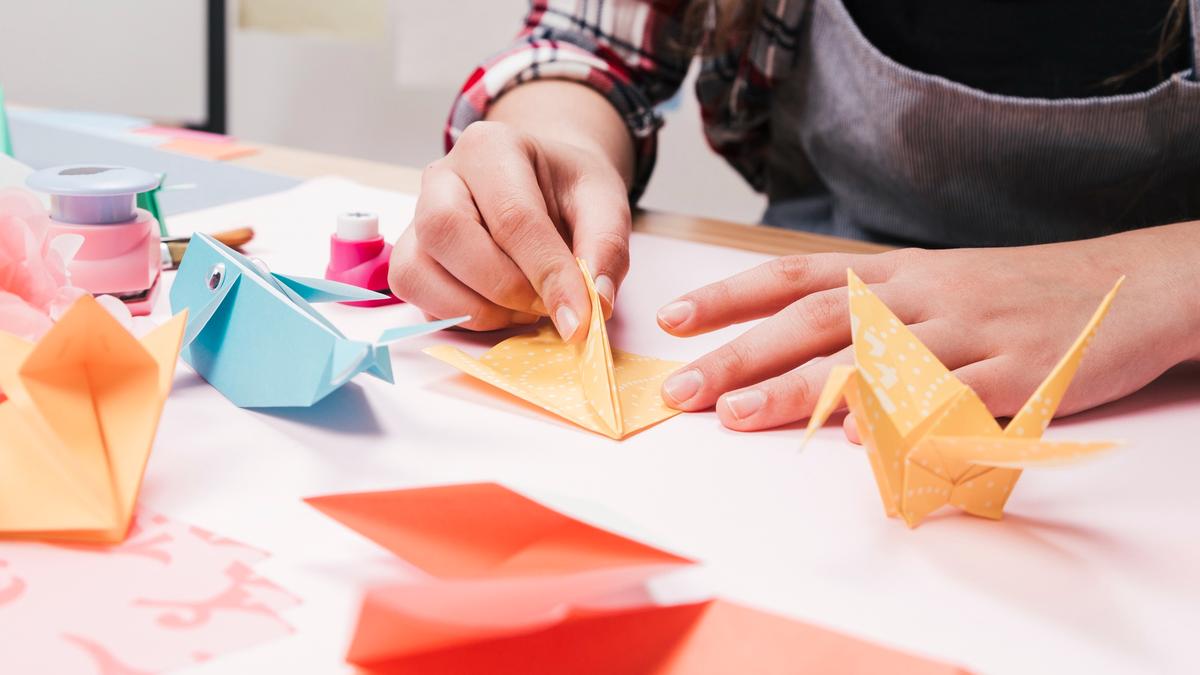Origami was first known as ‘orikata’ or ‘folded shapes’. In 1880, the name changed to origami from Japanese words oru – to fold and kami- paper. It is widely known that origami is a Japanese art form but it is not known that the paper folding tradition began in China around the 1st Century. For ceremonial purposes, the people of China used to burn folded paper representing gold ingots as an offering to the dead. This cultural exchange was passed on to Japan where it was practised by Buddhist monks.
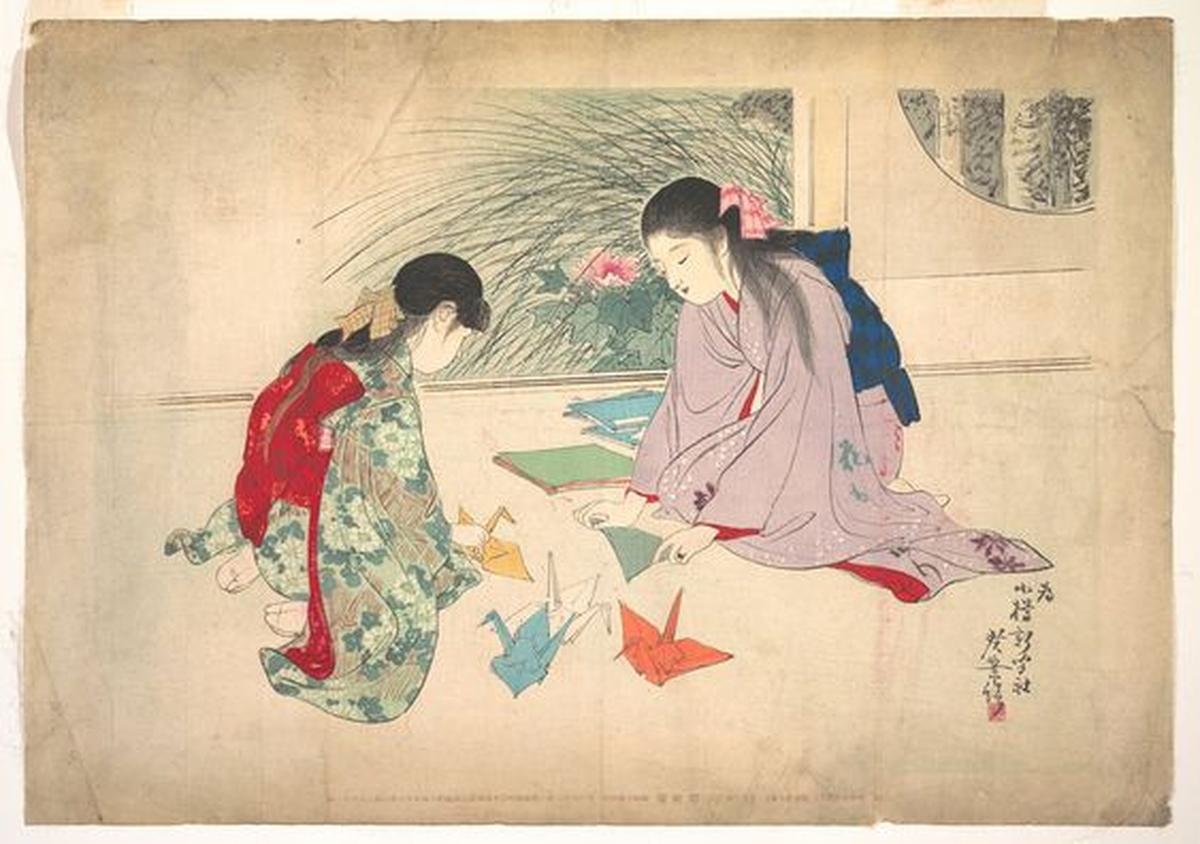
An ancient painting of women doing origami
| Photo Credit:
Wikimedia Commons
Papers used to be extremely expensive for any commoners to afford. During the Edo period in Japan, feudal lords started to expand the paper industry and papers became much more available. As paper became readily affordable, people started to make origami art as gifts, cards and envelopes. The first ever origami art was a pair of folded butterflies used as decoration at a wedding. No single person is credited for inventing origami, however over a hundred years later origami developed as a cultural tradition. There is one name that stands out in the world of origami: Akira Yoshizawa.
The father of origami
Akira Yoshizawa is often called ‘the father of origami’ as he created over 50,000 different origami designs. Besides designing origami, he created the system of diagramming origami – the method to write origami instructions. Yoshizawa learned origami as a child and later taught his colleagues at the factor where he used to work on geometry concepts for their jobs.

Akira Yoshizawa with his origami artworks
| Photo Credit:
Special Arrangement
In the year 1954, he published a book called ‘Atarashi Origami Geijutsu (New Origami Art) containing the basics and instructions about how to fold a particular model. This book made him the star and also the ‘cultural ambassador’ of Japan for bringing vast awareness of origami across the world. One of the most popular techniques of origami that employs wet, damp papers is founded by Yoshizawa.
The 1000 cranes
Did you know it is believed in Japan that origami brings good luck? People follow a traditional way to wish for one’s good health and happiness – by folding a thousand paper cranes.
Sadako Sasaki was a young girl who survived the Hiroshima atomic bombing in the year 1945. She fell sick due to radiation exposure and developed leukaemia. During her time at the hospital, she started folding origami cranes, inspired by a Japanese legend that folding a thousand paper cranes fulfils one’s wish. She was determined to achieve good health and world peace, pouring every ounce of hope into all paper cranes.

The memorial in Hiroshima in honour of Sadako
Unfortunately, she passed away in 1955 and folded 644 paper cranes, but her story lives on. Her paper cranes became a symbol of hope and resilience across the world. In Hiroshima, there is a memorial in honour of Sadako, filled with thousands of beautiful and colourful cranes made by people worldwide. The memorial stands as a reminder of the importance of peace and the power of hope.
Science in art
Origami is a form of art but did you know it also has a bit of science and mathematics? Let us see how.
1. Geometry: The art of origami relies on the principles of geometry. Every fold creates shapes and designs that turn a paper into a 3D figure. To make this beautiful art, one must understand how angles and geometry work.
2. Tessellations: It is a mathematical concept of fitting shapes together without any gaps. This method helps in creating stunning patterns reflecting the connection between art and maths.
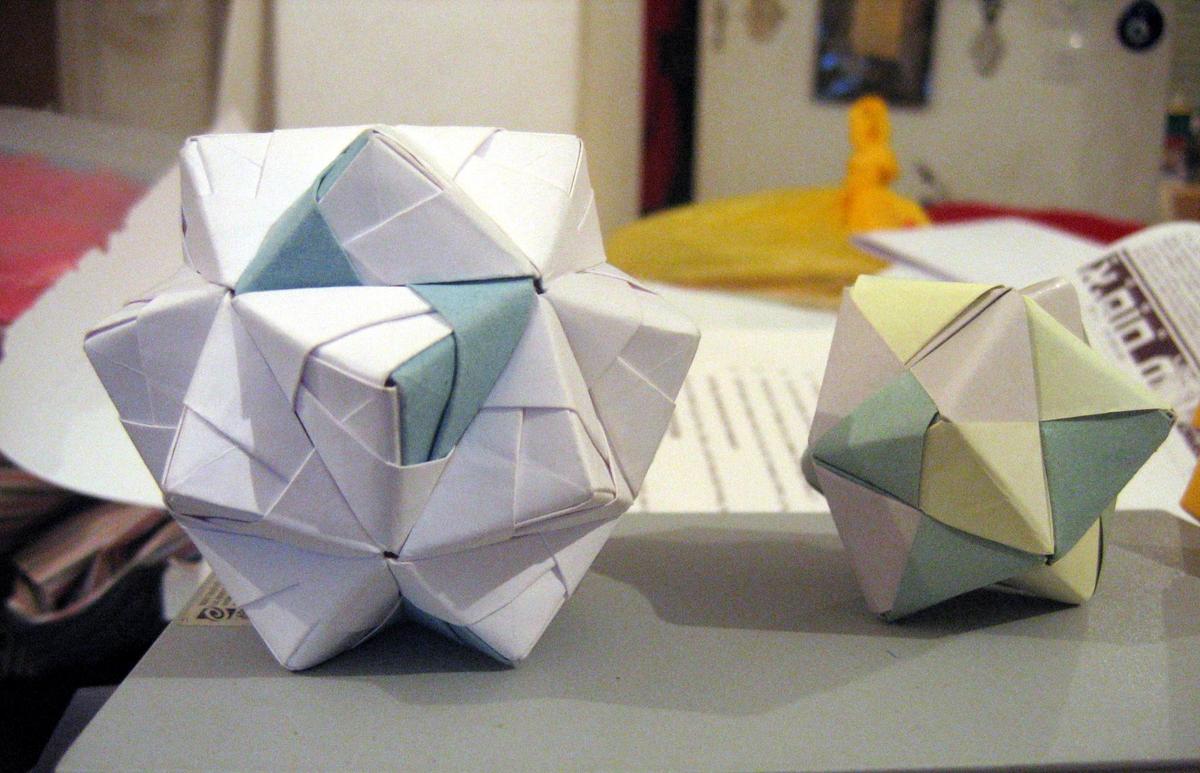
Modular shaped origami
Did you know?
Doing origami can improve your problem-solving skills and concentration. The careful folding requires focus and helps you develop spatial awareness (understanding how things fit together in space). It’s like giving your brain a workout!
Career in Origami
Turning a hobby into a professional career is a dream of many. Origami opens several doors of opportunities for people who enjoy this art. Here are some of the professions that you can pursue:
1. Origami Artist: One can exhibit their art of origami sculptures and paper art in museums, galleries and public spaces.
2. Origami Designer: From fashion to architecture, you can design foldable furniture, spacecraft or cars.
3. Origami Educator: If you’ve mastered the art of origami why not pass the trick to others? You can teach at schools, museums or online.
4. Engineer/Scientist: An origami expert can pursue a career in the field of robotics or med-tech and explore how folding techniques can solve real-world challenges. NASA uses a special kind of origami to design spacecraft solar panels that fold up neatly for launch and unfold in space.
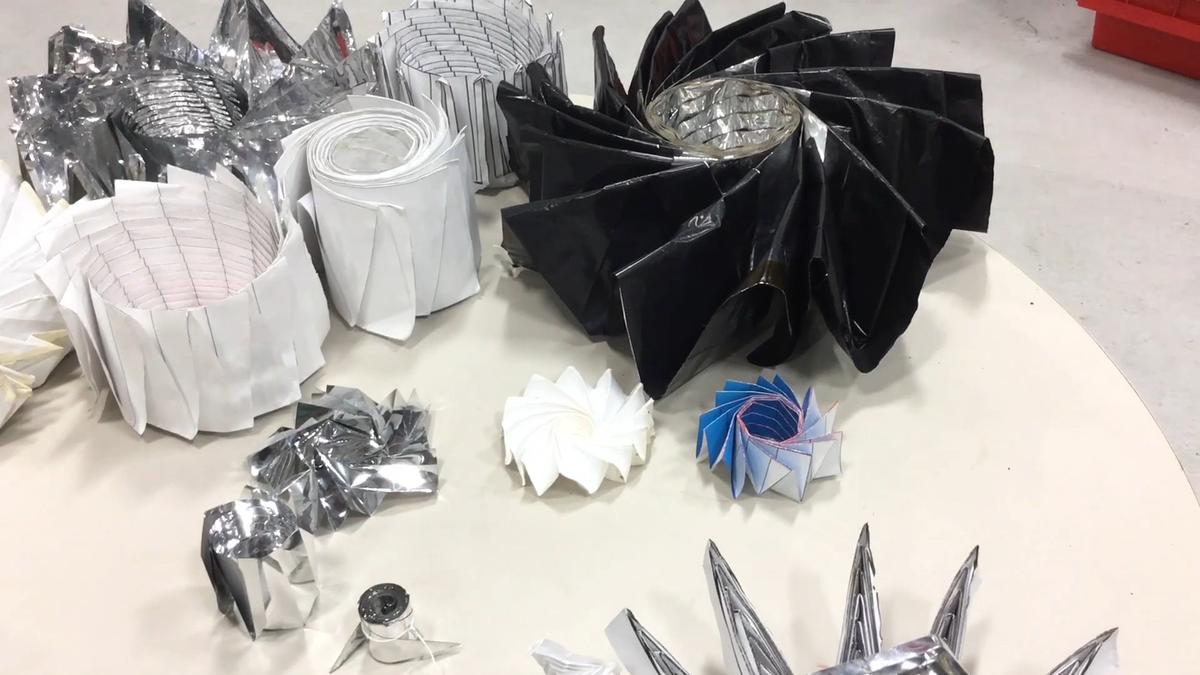
Origami designs at JPL that engineers are using to create folding spacecraft.
| Photo Credit:
NASA
Techniques of origami
1. Traditional Origami: An ancient way of doing origami often focuses on designing basic figures – flowers and animals.
2. Modular Origami: This technique of origami involves multiple papers folded together to assemble a larger structure. Modular origami helps in creating intricate and beautiful designs. The famous “sonobe” cube is a popular modular origami design.
3. Wet folding Origami: This method involves spraying paper with a mist of water to make the folds look softer, rounder and sculpted.
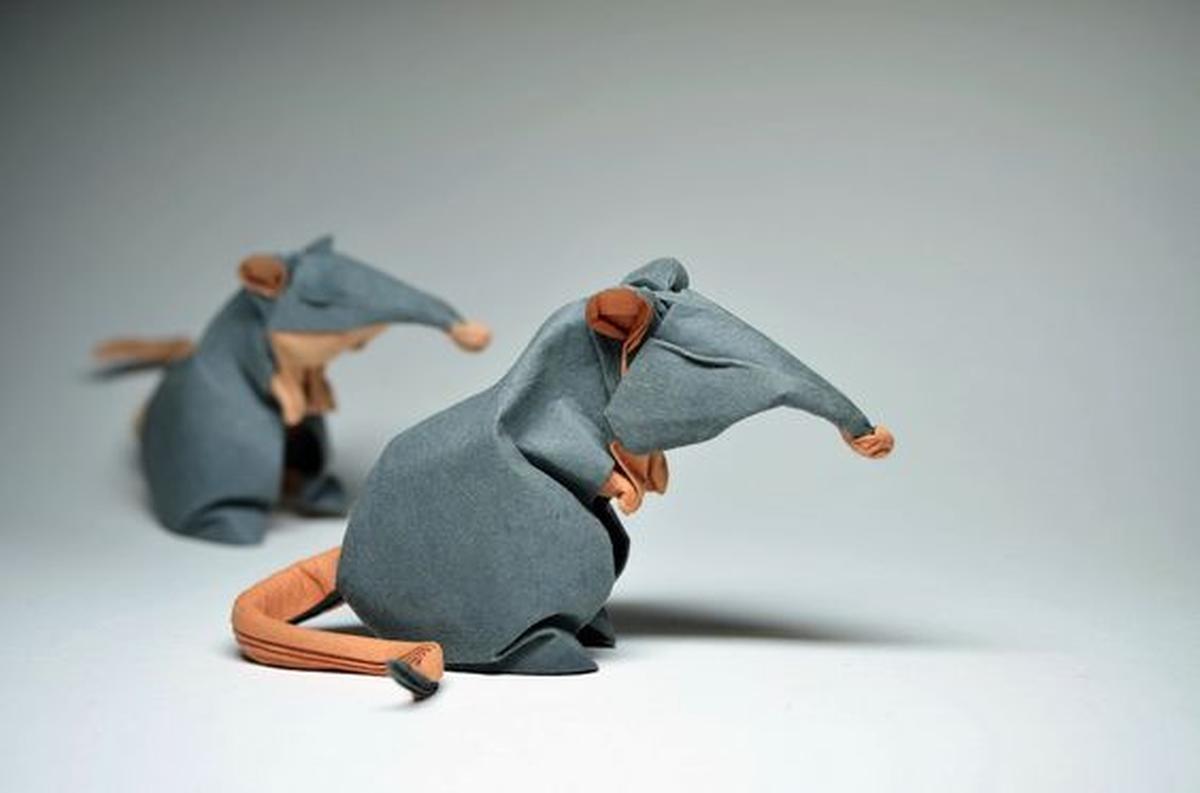
The artwork is made using wet folding origami technique.
Guide for beginners
Want to learn origami? You don’t need much just a handful of papers and power of creativity! Let’s get into it.
1. The right paper: Origami papers are typically lightweight and easy to fold. You can use notebook paper or newspaper.
2. Start simple: From paper flowers to cranes to boats, start with the simple stuff before diving deep into complex designs and techniques.
3. Follow the method: Get your hands on origami books or study from an online tutorial which is helpful for beginners.
4. Patience is the key: If your first-ever origami art turns out to be a funny-looking piece, don’t be disheartened. To learn the art of origami, patience is the key.
Whether you are doing origami as a hobby or for an art project, this ancient Japanese art form continues to inspire creativity and curiosity to date. While traditional origami uses paper, artists have expanded the medium to include materials like fabric, metal, and even plastic. Next time when you see a paper why not give it a fold to make something innovative and beautiful!
Published – October 20, 2024 09:00 am IST
#Unfolding #beauty #origami

